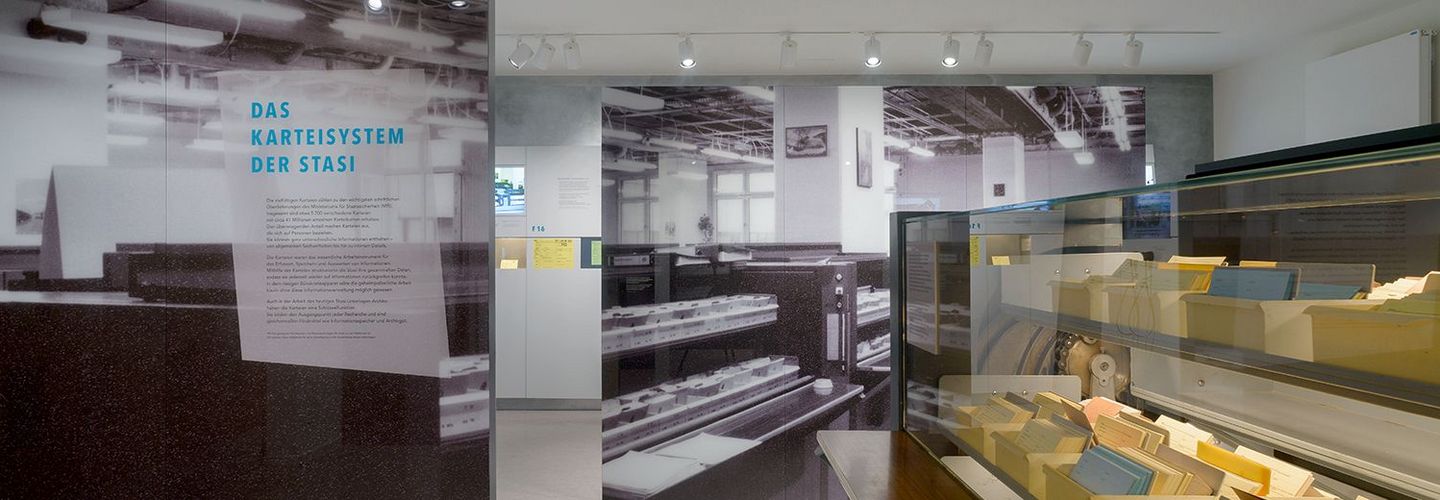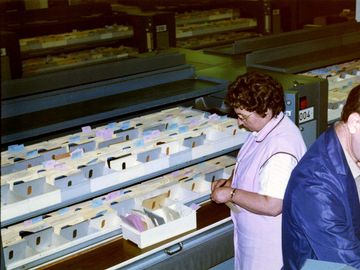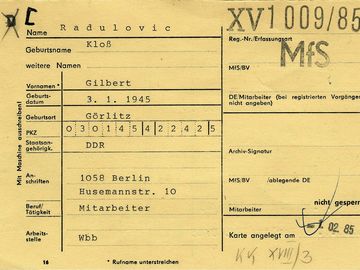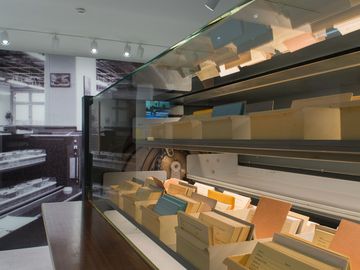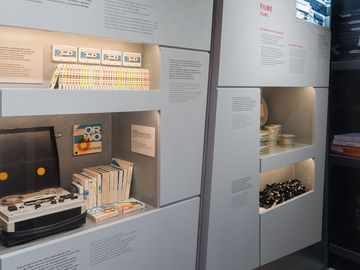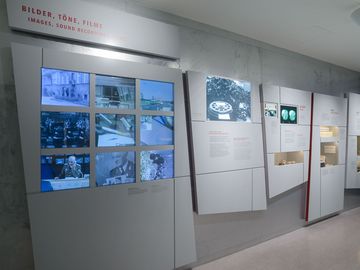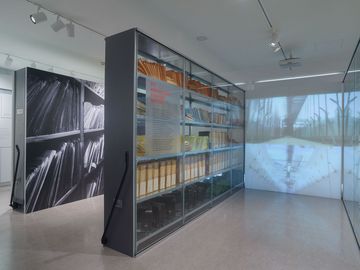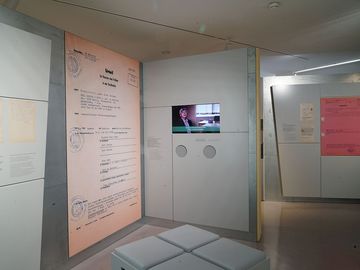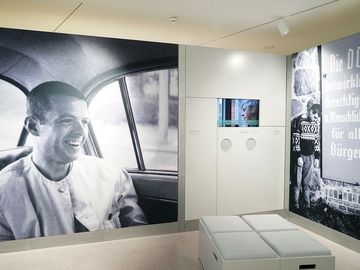Information about the Archive
Upon entering the ground floor you are greeted by stylised piles of paper files, conceived as a symbol of what the Stasi left behind. Today the Stasi Records Archive preserves this almost inconceivable mass of documents. The exhibition starts out with narrating the background and genesis of the archive during the Peaceful Revolution of 1989/90. This sheds a light on how the contemporary work of the Stasi Records Archive is inextricably linked to its origin.
The Card Index System of the Stasi
On the first floor the focus shifts to the extensive card index system the Stasi used as a centrepiece of information processing. With an original rotating index cabinet, historic photos and film clips the visitors will gain a sense of the offices the Stasi once worked in as well as present-day card index rooms and working areas of the Stasi Records Archive. Still today the 41 million index cards play a key role in the research of Stasi records.
The Legacy of the Stasi
On the second floor the visitor enters a room that first simulates an original repository room of the archive. Stepping between the two large archival rows of shelf space in the centre of the room one finds oneself between past and present of document storage. The room further displays the variety of media on which the Stasi stored its information – written documents as well as photos and videos, cassette tapes or computer discs. Not only the origin and type of archival record is shown in multimedia displays but also how current archivists work with the Stasi records. This part of the exhibition also explains how records are made accessible and preserved for the future.
The Case of Gilbert Radulovic
On the third floor a case study literally lets the visitor walk into a record. It presents the work processes, surveillance methods and the Stasi’s mode of operation. Why was Gilbert Radulovic sentenced to more than two years in prison? The tour through oversized, walk-in files allows at first an encounter with the Stasi’s perspective on Radulovic’s life by studying the original files. It is contrasted by Gilbert Radulovic’s account of the events as he remembers them in video interviews and allows personal insights into his biography. He gives a vivid testimony to the consequences of a state surveillance system.

